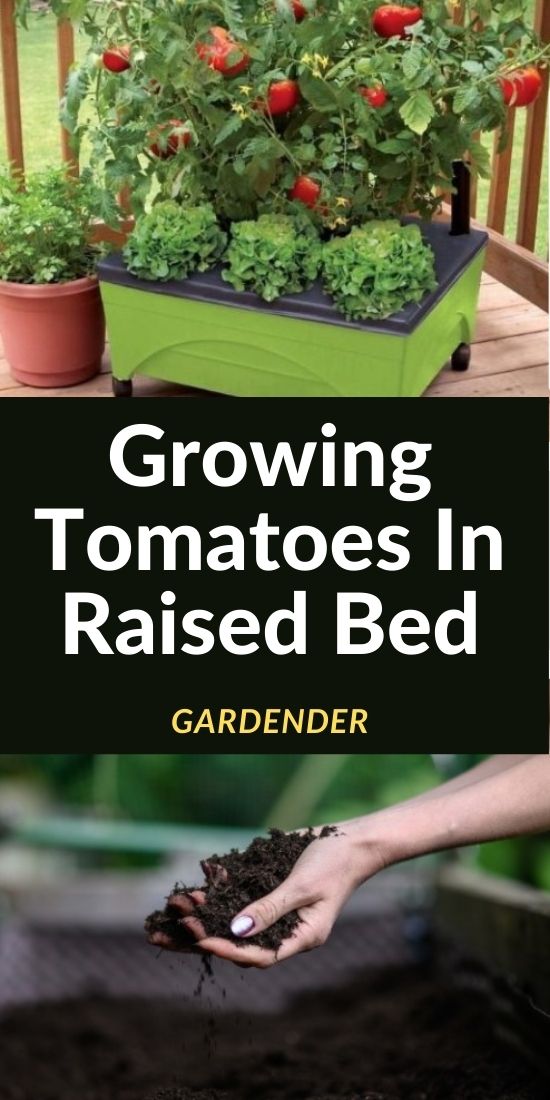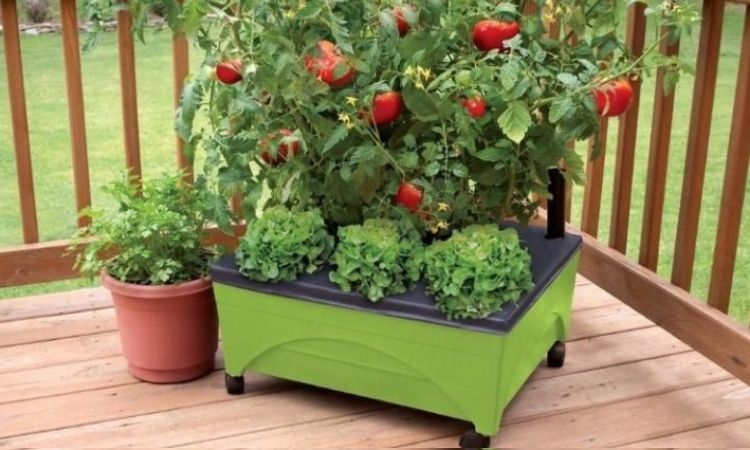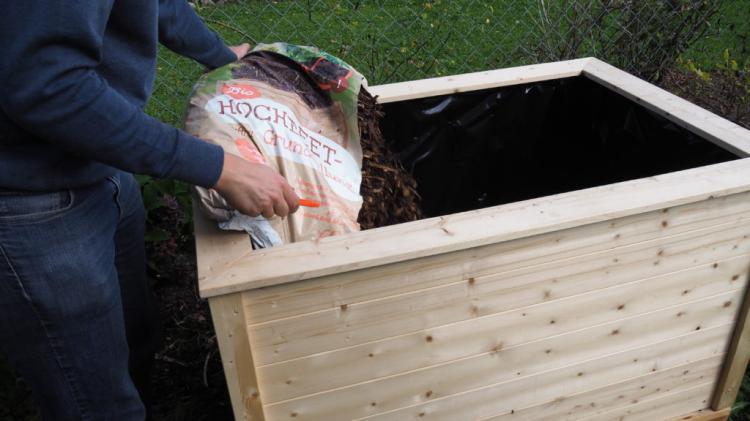Growing Tomatoes In Raised Bed – Practical Tips With Instructions For Amateur Gardeners
Growing tomatoes in a raised bed are one of the easiest and most practical approaches to gardening. You also don’t have to be a master builder or know how to use tools to complete such a DIY project. Reliable vendors can also provide you with inexpensive components, simple instructions on how to set it up, and know-how. However, if you want to know how to build a raised bed for tomatoes yourself, you can simply follow these basic tips and you will be able to enjoy an abundance of your own fresh and juicy organic vegetables this summer.
Advantages Of Tomatoes In Raised Beds
Table of Contents
Although gardening in raised beds is a little different from the usual methods, you can get a bountiful harvest if you grow your tomato plants in a raised bed. To do this, simply give your plants what they need. The main advantage is that the beds are set higher, which makes it easier for water to run off for the vegetables. In a raised bed, you can also grow your plants closer together, producing more tomatoes in a smaller space. But higher beds also mean you don’t have to bend over as much to work the soil.
Adding compost, topsoil, and fertilizer to the garden bed allows for a nutrient-rich home for your tomatoes. This saves resources and concentrates them where they can be best used. They also walk paths between beds and prevent the garden soil from becoming compacted. If a fungus or other disease attacks your tomatoes, you can replace the soil the following year. This is a step that would be impractical and costly in a regular garden. Slugs, for example, have a harder time attacking tomato plants growing in raised beds. Thus, these areas and such vegetable gardens are easier to care for and maintain.
Before You Start
The best locations for tomatoes in raised beds are level, well-drained, and located near a water source. Therefore, it’s best to choose a location that receives at least eight hours of direct sunlight each day. Create an outline of your raised bed using string, garden hose, or even flour, then measure the area. Work the soil first. Tomatoes require a lot of water, and the plant roots in a raised bed need to be able to penetrate the soil. Most vegetables, including tomatoes and cucumbers in raised beds, grow beautifully in the soil about 80″ deep.
If you realize the project in the garden, you should also prepare the site by first removing the grass. For example, use a spade or pitchfork to turn and loosen the soil to a depth of at least 78″. Choose a durable material for the border so you can grow tomatoes in the raised bed without a roof year after year. Choose from all types of materials for making raised beds, such as plastic, recycled composite, galvanized steel, or wood. In addition, also make sure that you can reach the center of the bed from both sides. Normally, the bed should not be wider than 47 inches. This way you can easily work and cultivate the plants. A common mistake is to build raised beds together too narrow.
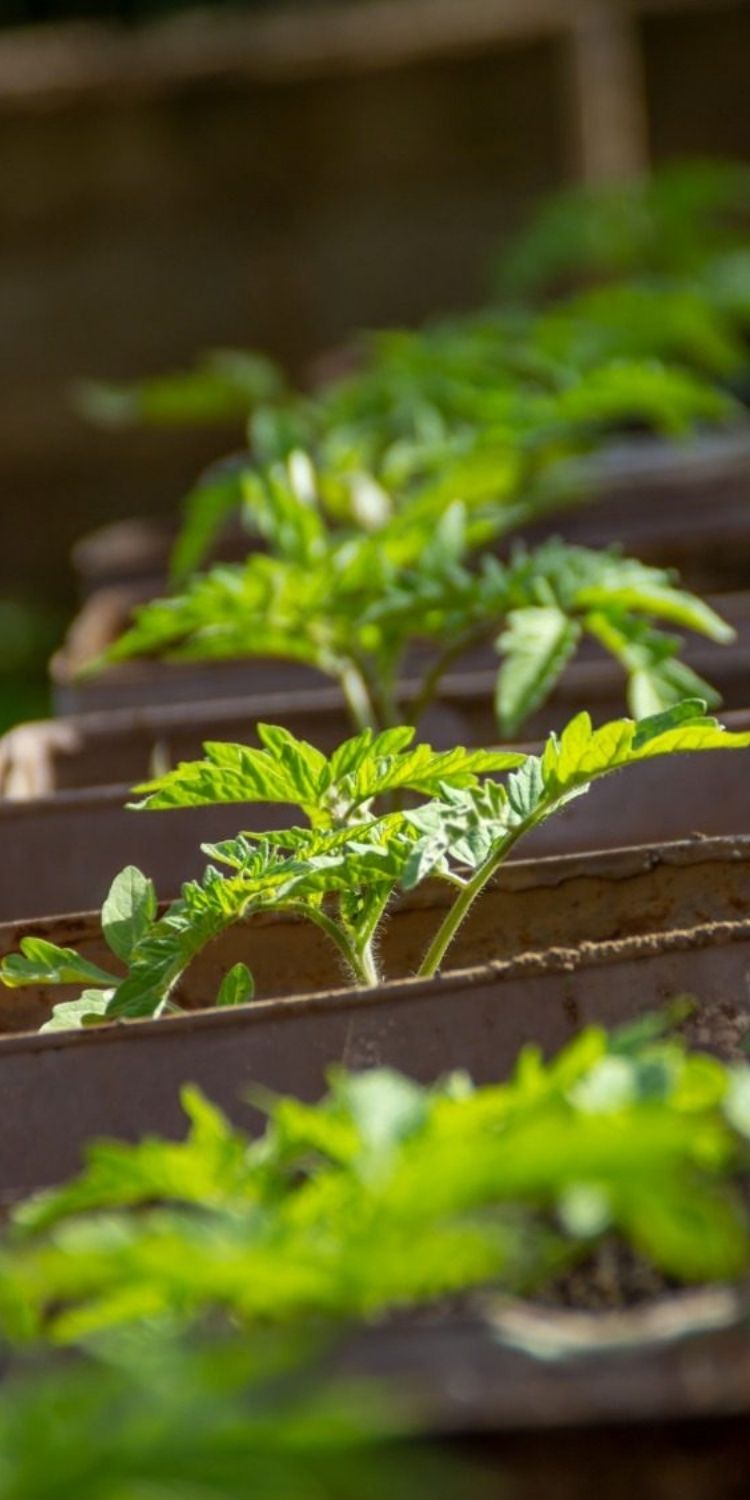
If you are building more than one vegetable bed, set it wide enough for your wheelbarrow to get through. Usually about 80 inches, but measure your wheelbarrow first to be sure. After you install the material for the border, line the bottom of the raised bed with chicken wire to keep out pests like rodents. To determine the volume of soil needed to fill your raised bed, measure its length, width and height in meters and multiply these numbers together. The result is the number of cubic yards needed. Combine soil and organic matter (shredded leaves, compost, well-rotted manure, seaweed) in the raised bed. Use a spade to mix the components well. Finally, rake the surface smooth.
When You Can Plant Tomatoes In The Raised Bed?
Where you live is the most important factor in deciding what time of year you should plant tomatoes in the raised bed with or without a roof. Generally, you can plant them as soon as the danger of frost has passed. Many people wait a little longer and honestly it will make little difference in the time you get your harvest. Whether you plant as soon as possible or wait an extra week or two. Your local garden store can help you determine the right time to plant for your location. If unexpected frost occurs late in the season, simply cover your plants in the early evening before the expected event. Instead of a roof, you can use plastic bottles, leftover bubble wrap from packing materials, or even a tent roof for this purpose.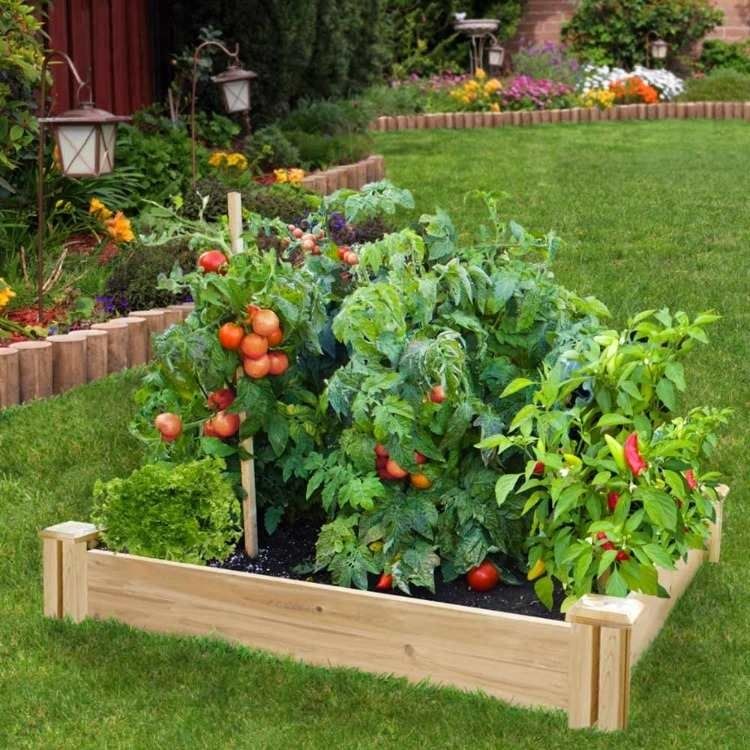
Create Raised Bed For Tomatoes With Concrete Tiles
With the following guide, you can create a small vegetable garden in your backyard in less than an hour. To do this, you will need plain cardboard or cardboard, 8 concrete bricks, topsoil, tomato seeds or tomato plants, and water. You may also need a shovel. You can find these at the hardware store. First, choose an area and measure the space. When doing this, make sure the location is exposed to direct sunlight for 6 to 8 hours a day. If you are using soil from the ground, you will need to add compost and appropriate fertilizer, like tomato fertilizer. With a tomato plant already grown, chances are it will grow faster and taller. This tutorial used seeds of large red cherry tomatoes.
Instructions
- First, layout the cardboard. Any variety will work for this project. Unfold the box and place it in the selected area. The cardboard will be the base of your vegetable garden. It will prevent weeds and grass from growing under the tomatoes and feed the plants.
- Then arrange the concrete blocks with 2 on each side. When doing this, make sure that the blocks overlap the edges of the cardboard, weighing them down in this way. Spread the soil into the formed basin on the cardboard. As mentioned above, this can be directly from the garden or purchased.
- For this size of the raised bed, one bag of topsoil is quite sufficient. Once the soil has filled the raised bed, smooth it out to evenly distribute the base.
- If you plant the seeds about 13 inches apart, the tomatoes will grow tall and not on top of each other. The main goal is to grow many healthy plants. If they are too close together, the tomato plants will be less vigorous and unhealthy.
- Then cover the seeds with soil. Planting the seeds 3 inches deep in the soil will help with growth, as water is better stored there to feed the roots.
- Water the soil until the soil is evenly moist. Watering the seeds after planting helps them to decompose and grow in moist soil. Gently spray the soil with a hose.

Watering And Care
Check daily whether the soil is moist. Indeed, you need to keep moist until all the seedlings appear on the surface of the soil. This will allow the plants to grow large and strong to produce large tomatoes. Note: Test the moisture of the soil by pressing a finger into it. It is best to water the tomatoes in the raised bed in the evening. Water on the tomato leaves in the hot sun can damage the plant by burning it. Once the plants are at least 13 inches tall, it may be helpful to spread straw to keep the soil moist and reduce the need for watering.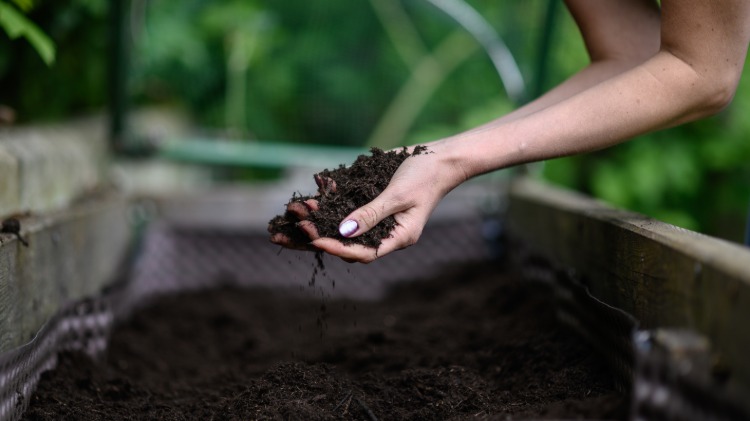
So tomatoes and other similar vegetables need plenty of water. A long, slow trickle is perfect for allowing it to seep into the deep root system of your plants. If you don’t have this set up, try watering the plants several times within a few hours. This will also allow the moisture to settle deep into the soil. It’s also good for the water close to the ground, especially if you do this in the evening, so the leaves don’t stay damp all night. Wet leaves are more prone to fall ill.
You might so like: Tomato Plants In Winter: Expert Tips For Hibernating Tomatoes
The thatch helps maintain essential moisture for the root system and soil warmth and reduces the appearance of weeds. Be sure to leave a few inches around the base of each plant to allow good water penetration and room for the plant to breathe. As mentioned above, don’t encourage disease in your plants. Raised beds are slightly less prone to problems than regular gardens, but the following tips will help you avoid potential problems.
Tips And Tricks For Planting Tomatoes In A Raised Bed
One easy way to avoid potential pests in your raised bed is to replace the vegetables in the beds with unrelated vegetables each year. That way, leftover pests from the year before won’t be lying in wait. Peppers and tomatoes in raised beds are nightshade crops, as well as potatoes and eggplants. For this reason, we suggest replacing them with cruciferous crops such as lettuce, peas, carrots, beets, or beans.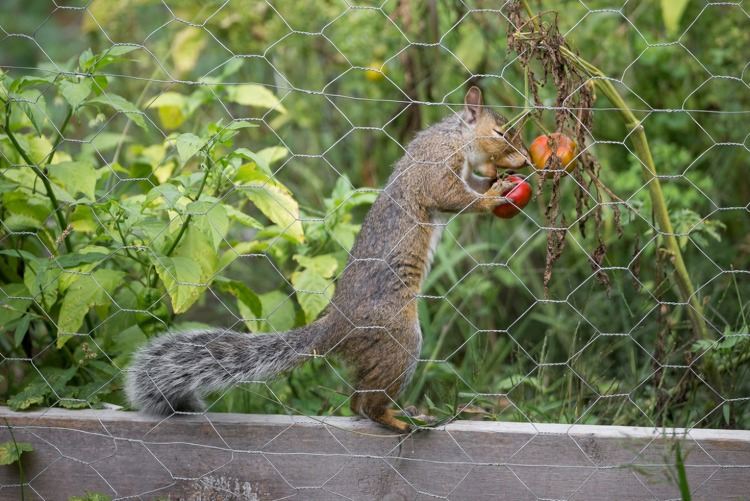
Although earthworms are less of a problem in a raised bed than when planting in the ground, these little pests can still find their way in. This is especially true if you are adding regular garden soil or your bed is older. Therefore, as mentioned earlier in the instructions, laying out cardboard can protect your young tomato plants.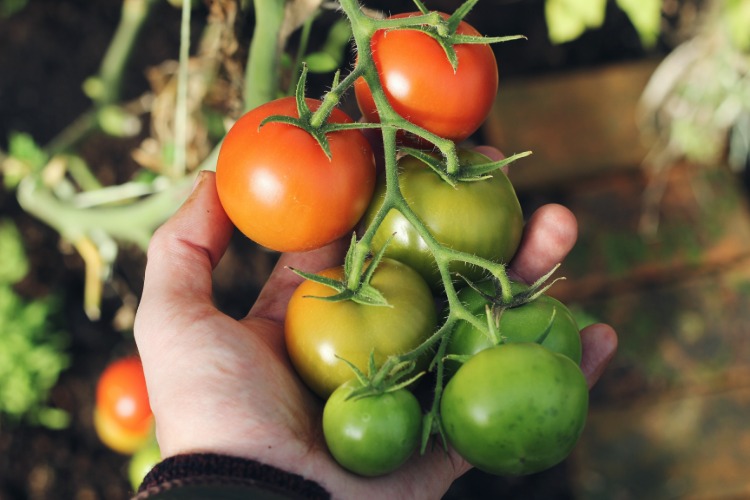
For most other pests, keeping a watchful eye is your best defense. If you notice that some parts of the plant are discoloring or withering, check immediately to see if there is an infestation. Many home remedies are easy to make and suitable organic pesticides are easy to find for vegetable gardens these days. So, as with dealing with insects, your raised bed requires your vigilance. Remove ripe fruit immediately, as it attracts not only insects but also animals. If you have problems with blossom end rot, add calcium to the bed. Fungal diseases can often be avoided by properly supporting your tomatoes. You may also like how to layer in a raised garden bed.
